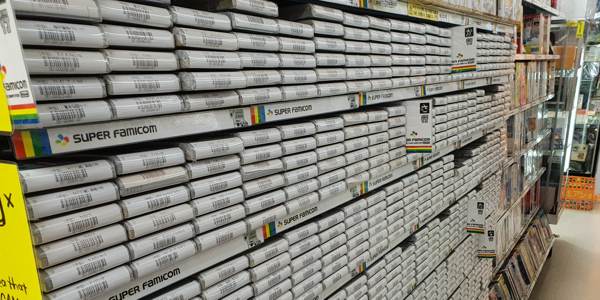If you’re a fan of retro games shopping, Japan is often seen as the place to be to score bargains, but it’s quite a bit more complicated than that.
A couple of months back, I spent a very pleasant week in Japan, taking in temples, castles, museums, excellent food, culture, practising my still-way-too-rudimentary Japanese… and doing a little light retro games shopping.
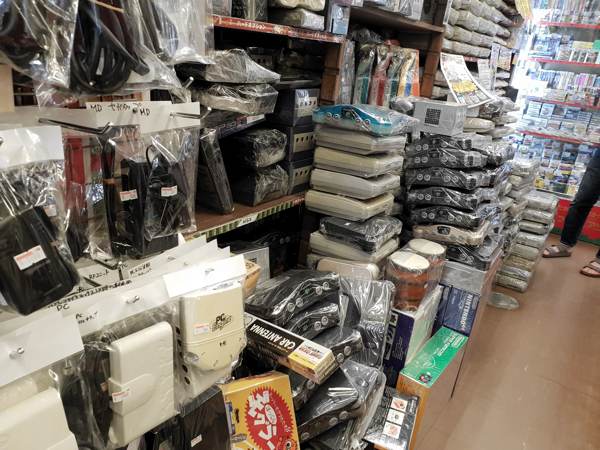
It’s a topic I’ve written about before, because (in case you weren’t aware) it’s a passion of mine, and one that works reasonably well within the way that the Japanese tend to recycle and resell everything.
Drop into an EB Games in Australia, and you’re lucky to find something from a gaming generation ago. Drop into a games store in Japan, and you might just find something from the 1970s…
See also:
Retro Gaming: It’s getting worse
Retro gaming in Tokyo: Where to shop and how to save (if you can)
Which makes it sound idyllic, but the reality is rather more complex, especially as the years go by.
Part of the problem is that there’s still a LOT of information out there that suggests that it’s as easy as dropping into a Book-Off and walking out with thousands of games at 100 yen a shot… but that hasn’t been the case for years.
This year, however, I was also travelling rather further afield than I had in previous jaunts, taking in the delights of Kyoto, Osaka and Hiroshima alongside a smattering of Tokyo life.
(Yes, I know, Japan is much bigger and wider than those cities. Believe me, I’ll be back, and not for the retro games. But I digress.)
I’ve written about retro gaming buying in Tokyo before (you can read that here), and my notes from 2016 are still pretty much on the money, with a few notable exceptions.
PC gaming store Beep didn’t seem to be open at all during my stay (and the state of the paint and upkeep didn’t bode well), and Nakano Broadway’s many otaku-themed shops were giving way to a wide (and often eclectic) range of camera, handbag, fashion and food stores.
So I’m told, it’s due to be demolished due to earthquake safety regulations (smart enough for a country with so many earthquakes), but I’ll be sad to see Nakano Broadway go. Unless of course they rebuild it with something better.
But what about in the broader Japan? Well, there’s good news… and bad news.
The good stuff
Go west: If you’re after retro game shopping outside of Tokyo, Osaka’s easily your best next bet, simply because you can find more dedicated retro game shops there than anywhere else.
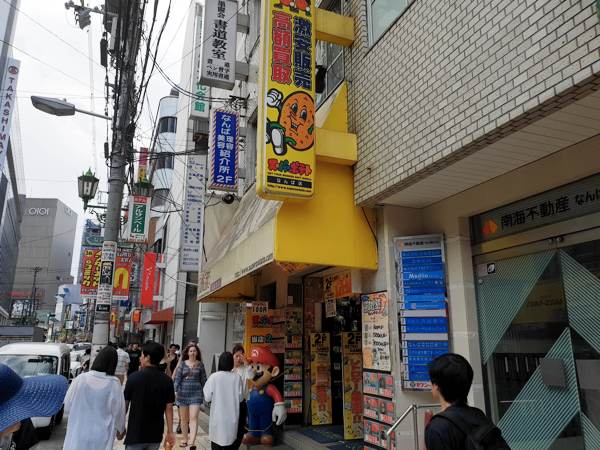
Yes, some regular game shops and second hand dealers (I’ll get to this in a moment) will have a small selection of old software for sale, but there’s definitely something enjoyable about just having a browse, even if you’re not buying.
(Some) prices are stabilising: What about bargains? They’re… thin on the ground. I did notice some titles that would previously have commanded silly money — Demon’s Blazon/Demon’s Crest, for example — at slightly more sane prices, so maybe there’s been some levelling in the market for specific titles.
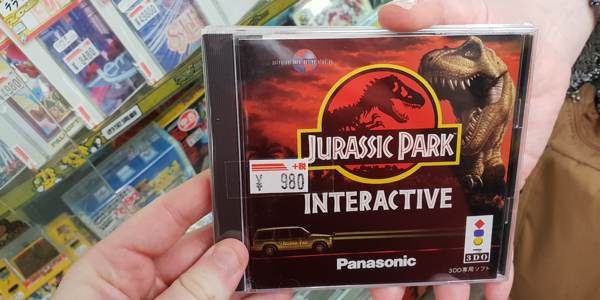
Further fun fact: It wasn’t for me, but I knew somebody who would love it.
More stock around: What did seem to have improved was actual game availability. Previous trips through Japan had shown a dwindling set of available games, and while that’s obviously limited by the fact that these are old, out of print games that head overseas and never come back to an extent, this time around I did spot more of the kinds of rarities that folks get very passionate about.
Yes, you do pay a premium for them, and in many cases I walked straight past because they were well above what I’d want to pay as a player of games, not just somebody who puts them on a shelf to rot. But if you want them, they’re present. Clearly the higher prices mean that they stay there a little longer.
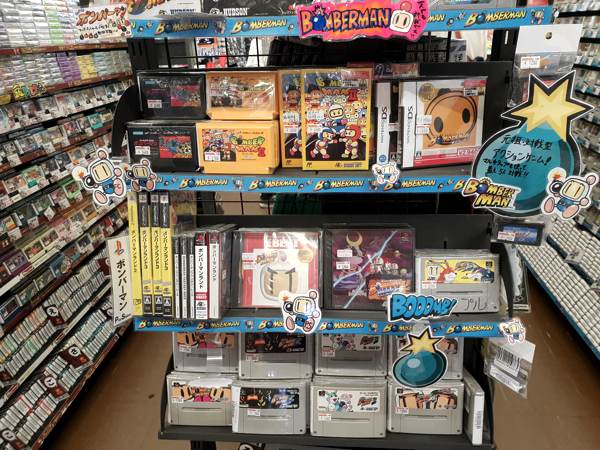
Which is why, once again, I used being in Japan to expand my gaming horizons and take a few punts on low and mid-priced games I’d never played before.
Not so much in the RPG sense — my Japanese reading comprehension still needs a lot of work before I’ll dive into those — but with a smattering of puzzle and action games where the language barrier wasn’t quite so dense.
I also had a lot of fun trying to find the cheapest copy of Derby Stallion ’96 I could locate.
It’s one of those games that clutters up the “junk” bins in vast quantities, usually at rock bottom prices. In Tokyo, I saw copies for 500 yen. In Hiroshima, 250 yen. Kyoto matched that, but Osaka topped them all, with copies to be had for only 20 yen each.
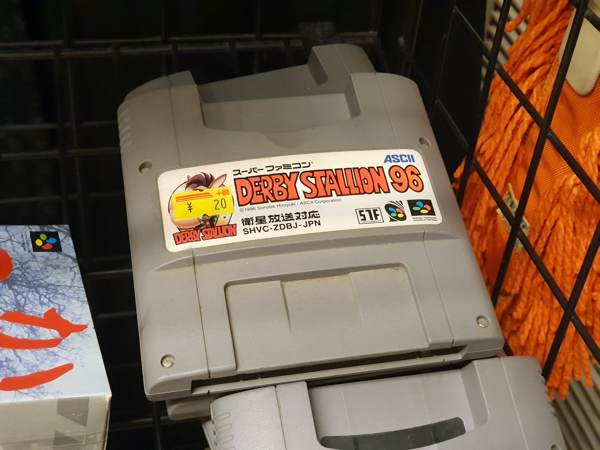
Clearly I should wait for the price to drop just a little more.
No, I didn’t buy one. I feel certain that they’re still there if you’re suddenly keen.
The bad stuff
Junk bins are just about done: A quick primer on “junk bins” for those not across the concept. Buy a second-hand item in Japan (including games) and it comes with an effective warranty that it’ll work as intended.
Obviously if you’re a visiting tourist that’s only got limited viability if something goes wrong, but the reality here is that I’ve simply never had a second-hand retro game not work as intended. It’s tested, often shrinkwrapped and priced according to condition.
Junk bins, on the other hand, is where all the stuff that fails testing, or is simply too worn or gunky to be worth testing ends up. In years gone past they could be a treasure trove of oddities and bargains, and not beyond rescuing with a little TLC.

Probably.
Or maybe it’s just an owl.
I’ve scored some great games out of junk bins in years gone past — most of my Japanese Saturn game collection, for example, was scored from the Trader outlet in Akihabara for no more than 97 yen per game — but it seems like the very bottom of the junk barrel has been well and truly scraped.
Outside of those endless copies of Derby Stallion ’96, what remains really was, well… junk. I guess if you just wanted something that “looked like a weird Japanese game” you could pick something up as a trophy… but that’s about it.
Book-Off prices are way up: Book-Off (and the associated -Off chain stores) specialise in second-hand goods of all types, including retro games. I’d noted before that the big Book-Off in Akihabara was amongst the worst for scoring bargains, because it gets so much tourist foot traffic, but outlying stores could be better.
There are Book-Off (and Hard-Off) locations just about everywhere, but the reality here is that pricing has jumped pretty alarmingly. Don’t be surprised to find a game in Book-Off at prices at, or above, what you’d pay in a Super Potato or Mandarake store, despite being a little grimier and unboxed.
There’s an excellent Twitter account, HardOffDiary, that you should follow to see what can be found, but even there you’re looking at prices at the 2,000+ yen price point, where not that long ago they might have been 100-500 yen.
At only 500 yen, that’s (most likely) a Famicom statue, not a working console (and a big part of your luggage back if you take the punt)
Does that mean it’s not worth checking out Book-Off or Hard-Off (or even Junk-Off, if you like risks) outlets? Not at all — it’s just that you’ve got to be a lot more realistic about what you’ll find and what you’ll pay for it.
There’s still some regional variance — for some reason, the Book-Off in Hiroshima that I ducked into had some of the most expensive prices I’d seen anywhere.
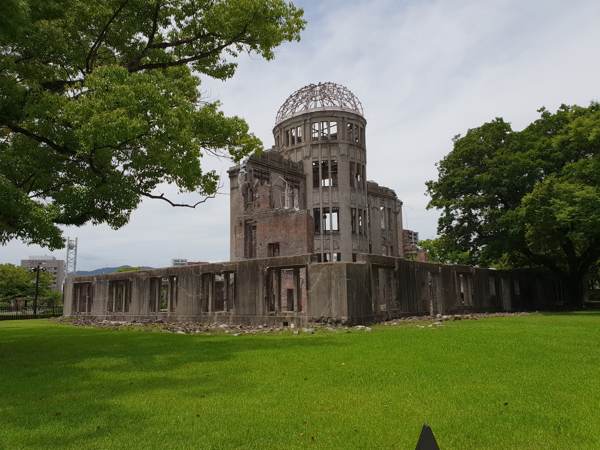
I’d wanted to visit the peace park for decades, and it quite literally brought me to tears. It’s an amazing experience.
They can also simply be a lot of fun to browse around, especially if you’re travelling with someone who doesn’t share your retro gaming passion. They can check out figures, DVDs, books, electronics, clothes or plenty of other stuff while you’re flicking through old cartridges.
The expensive stuff
Want to pay too much? You totally can: Yeah, you can still spend way too much on “collectible” games. I’m not a fan of the concept.
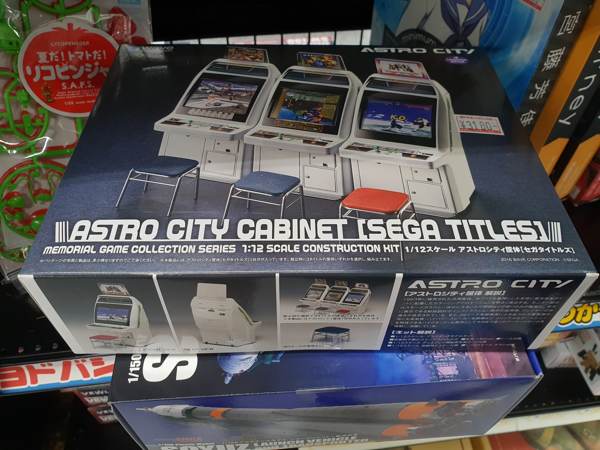
Although a full sized cabinet? That’s an entirely different (and rather expensive) story.
If I buy a game, I’m going to play it, and while my “collection” has size and there are games that have only been lightly played, there’s nothing there that exists for its own sake.
But if that’s you, head to the big Mandarake in Akihabara, or ask for anything in a glass cabinet in Super Potato. Just be prepared for a LOT of zeroes after the asking price for that boxed and shrinkwrapped game of your dreams.
Or, y’know, a 20 yen copy of Derby Stallion ’96. I won’t judge you.
